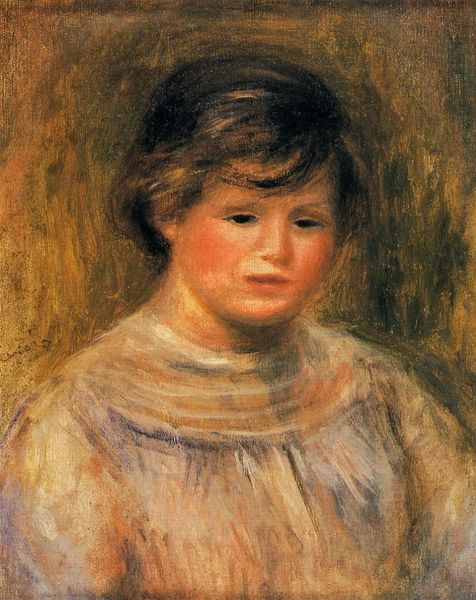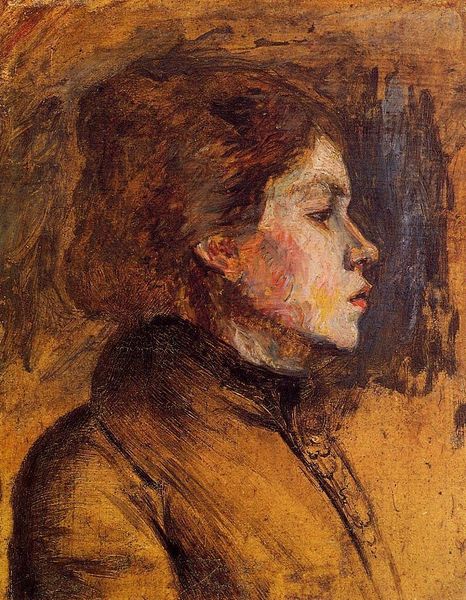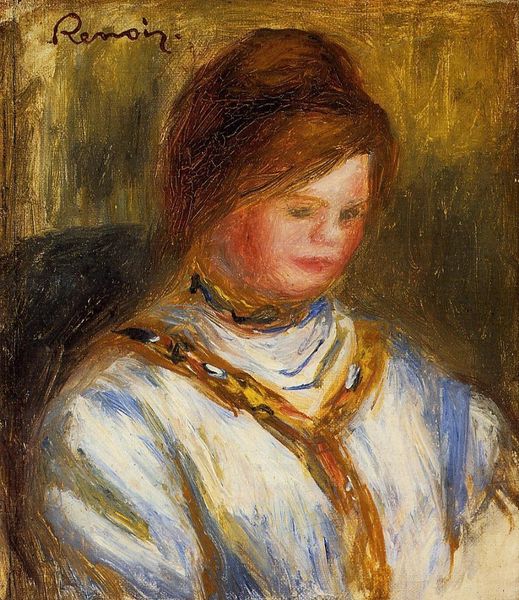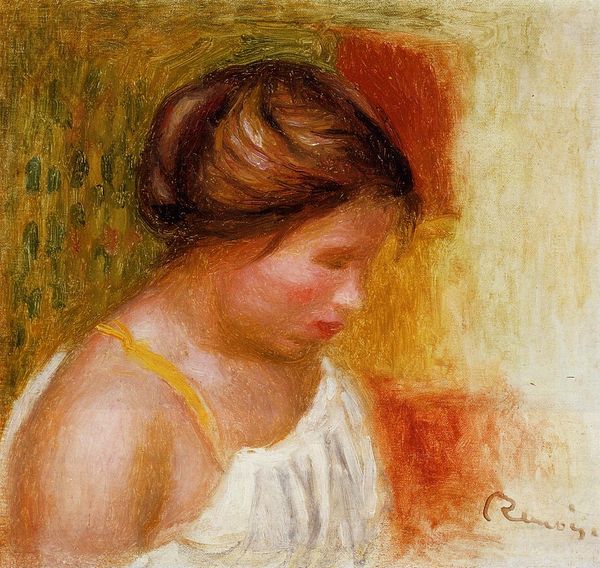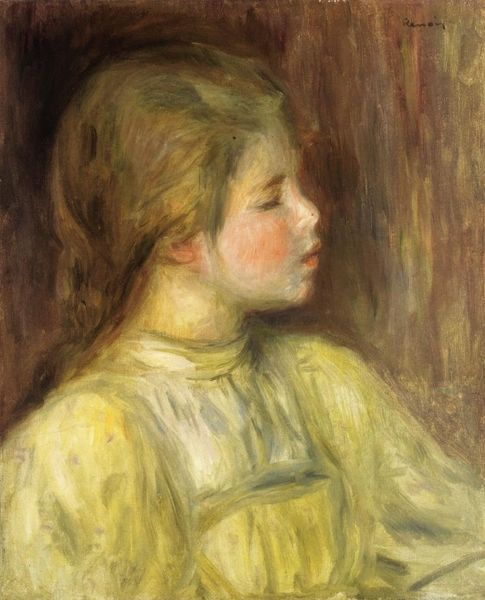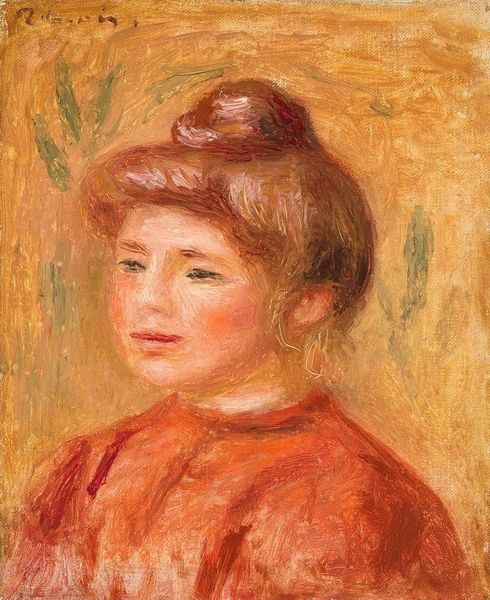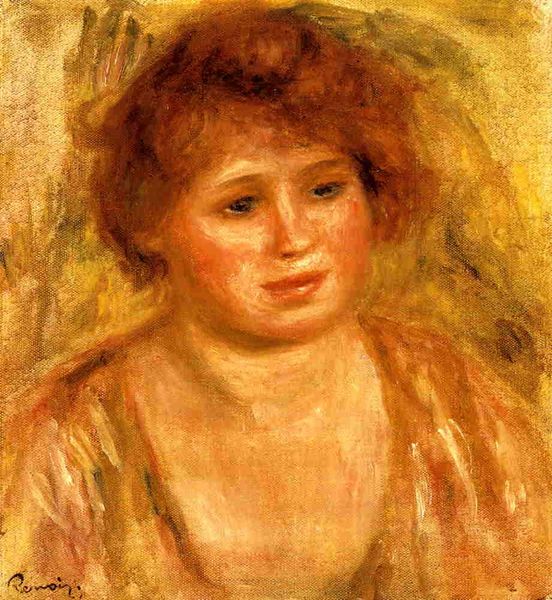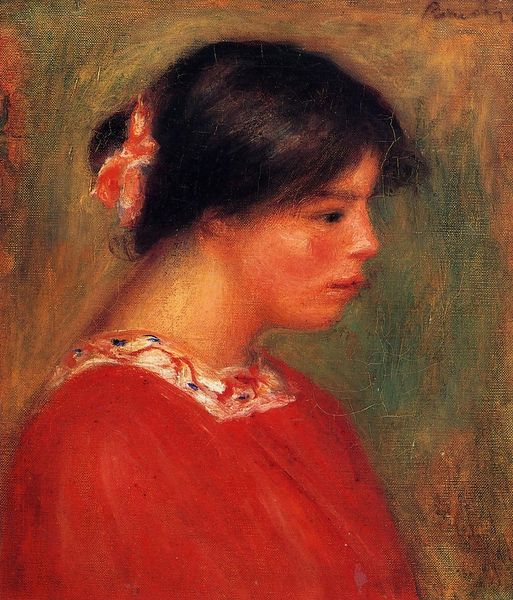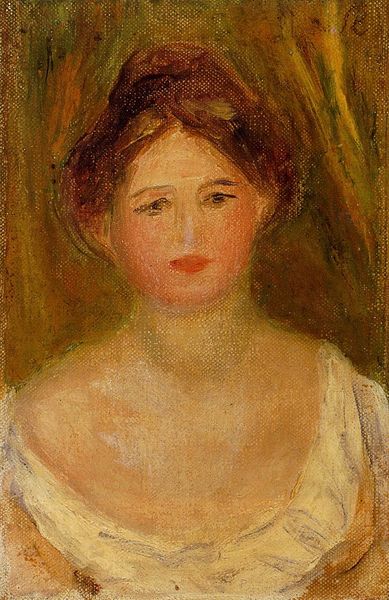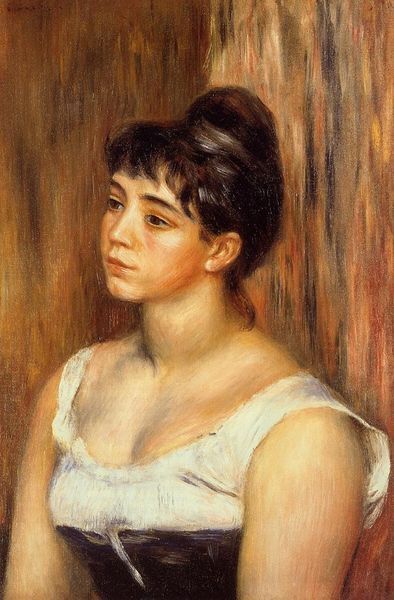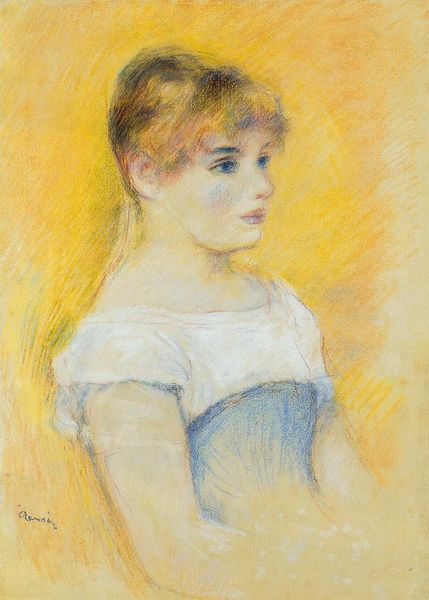
Copyright: Public domain
Curator: Looking at Renoir's "Portrait of Gabrielle," created in 1906, I am immediately struck by the tender expression. It’s incredibly intimate. Editor: There's a gentleness about it, certainly, but I see a studied, almost formalized intimacy, typical of the late Impressionist portraits that served a particular clientele and public expectation. Curator: True, the setting feels classic portraiture, but notice the light. The soft focus emphasizes the subject's inner world, inviting empathy. The slight downward gaze suggests contemplation, a motif resonating with introspective femininity found throughout art history. Editor: I think it represents more the shift towards focusing on bourgeois subjects within his immediate circle, Gabrielle being a frequent model within the domestic sphere. That intimate familiarity is what he translated to the canvas. Curator: Her simple white dress evokes a sense of purity and timelessness. White as a symbol often signifies innocence and a blank canvas ready to be written upon. Considering Renoir's own changing health at the time, the youthfulness might reflect a wistful glance towards renewed vitality. Editor: White in fashion served its purpose to be painted on and create value that later would have to appeal in the marketplace; such was Renoir's institutional situation in that era. We have to remember how portraits perpetuated an ideal and also offered a way to record one’s likeness, especially when photography was not in everyone's budget. Curator: A vital point to make. Despite this reality, art constantly grapples with the weight of visual symbols—youth, dress, posture— to express emotional nuance. I can see how these could all intertwine when looking at this piece. Editor: Absolutely. Renoir navigated this societal expectation while making innovative use of those demands; this image and so many of his intimate portraits remind us of these cultural negotiations. Curator: Examining her expression, it's hard to ignore the psychological depth he achieves. The cultural value and intimate reality add richness and intensity. Editor: Yes, understanding that duality in both his subject and practice allows us to have a new depth in how we consume his work and situate him historically.
Comments
No comments
Be the first to comment and join the conversation on the ultimate creative platform.
